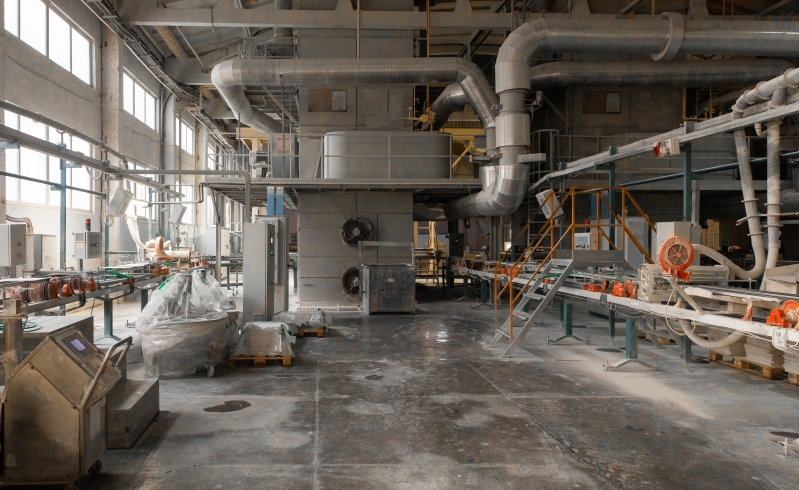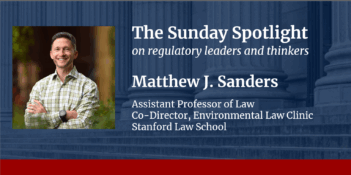
Despite ongoing fatalities, OSHA has no specific regulations in place for combustible dust hazards.
Between 1980 and 2005, 281 combustible dust explosions led to the deaths of 119 industrial workers and injuring of 718 others. And in the years since, similar disasters have caused numerous additional fatalities; in 2008, a single sugar dust ignition killed 14 workers in Georgia.
Such tragedies may have been “readily preventable” if workplaces adopted certain engineering controls, ventilation systems, and training protocols. Yet the U.S. Occupational Safety and Health Administration (OSHA) has retreated from setting specific regulations for combustible dust hazards, citing resource constraints.
Instead, OSHA has relied on unenforceable guidance documents and general workplace safety inspections. Meanwhile, an industry group and some states have sought to impose their own standards. But the gap in federal regulatory oversight may be due further scrutiny—particularly as emerging technology could reduce the costs of detecting combustible dust risks.
Almost any finely divided material can burn or explode when suspended in the air under certain conditions. Even metals that do not ignite normally, such as aluminum, may become explosible in dust form—as can materials such as coal, wood, candy, spices, grain, tobacco, plastics, pesticides, rubber, fiberglass, and dyes.
OSHA has responded to these wide-ranging hazards by inspecting facilities under its overall safety framework. After the 2008 sugar dust explosion, the agency expanded its Combustible Dust National Emphasis Program to inspect additional facilities in industrial sectors that experience frequent or “catastrophic” combustible dust incidents.
But even with this program, OSHA lacks explicit power to cite a company for specific combustible dust risks. Inspectors are restricted to issuing citations under OSHA’s umbrella “housekeeping” regulations or its “general duty clause” authority, which broadly require employers to address workplace safety hazards.
As such, OSHA’s ability to prod industry to reduce the risks of combustible dust explosions is of limited effectiveness. The agency has issued interpretation letters explaining how OSHA can apply existing requirements to combustible dust, but these guidance documents do not carry the force of law. They cannot establish distinct employer obligations for addressing such risks—as is the case for other hazardous materials, including lead. Dust explosions arise from many factors, which must be monitored together to assess risks effectively; for this reason, targeted dust obligations that weigh all factors may help employers better prevent disasters.
Recognizing its limited authority to address combustible dust risks, in 2009 OSHA began working on a comprehensive combustible dust standard that could bind employers to undertake more proactive mitigation measures. The agency published an advance notice of proposed rulemaking and hosted multiple stakeholder meetings. In 2015, OSHA upgraded the proposed standard from “long-term action” to the “pre-rule stage,” indicating that a final rule should have been imminent.
But in 2017, OSHA withdrew its rulemaking proposal and swept combustible dust off its regulatory agenda entirely, citing “resource constraints and other priorities.” The combustible dust standard appears to have joined two other abandoned OSHA rules (for silica dust and beryllium) as casualties of the Trump Administration’s broader deregulatory agenda. In addition, OSHA inspections for general workplace hazards—such as combustible dust—dropped by at least 20 percent between 2016 and 2018, even as workers continued dying from dust explosions.
As OSHA has retreated, an industry standard-setter has become a leader in combustible dust risk mitigation, as well as a model for the agency’s own guidance documents.
The National Fire Protection Association (NFPA) released its first Standard on the Fundamentals of Combustible Dust in 2016 and then updated this standard in 2019. One of the standard’s newer guidelines calls on facilities to conduct a step-by-step dust hazard analysis to be kept on record with the local, county, or state body that implements building codes and fire safety inspections.
Although OSHA often references NFPA guidelines in its combustible dust directives, it cannot enforce such standards without undertaking an official rulemaking.
Noting this lack of enforceability, many states have pursued their own standards to address combustible dust risks. For example, Georgia requires all facilities that manufacture or handle dust to register with the state Office of Insurance and Safety Fire Commissioner. California has adopted one of the most stringent regulatory frameworks in the country.
But state regulations can shift more quickly than dust itself. In 2018, Connecticut reversed course and removed provisions on combustible dust from its safety code. And, as illustrated by Georgia’s adoption of requirements only after the fatal 2008 sugar explosion, state action on combustible dust dangers also tends to be reactive—initiated only after numerous workers have died.
In comparison to state agencies, OSHA may be better positioned to pursue more proactive standards. Although the Biden Administration has yet to show interest in resurrecting a combustible dust standard, legislative pressure could spur action on this issue. In 2008, the U.S. House of Representatives passed a combustible dust bill in an attempt to hasten OSHA rulemaking. The bill stalled in the U.S. Senate, but it could be revived.
And in contrast to a decade ago, an OSHA standard would now be bolstered by recent technological developments, which may bring down the costs required to implement combustible dust regulations. In 2020, researchers designed an application that can detect combustible dust concentrations in the air, based on images and video footage alone. Current technology for detecting dust levels requires the physical separation of dust matter into multiple filters for analysis—an expensive process that involves significant training.
The advent of this new technology may make it more feasible for firms to monitor dust levels and comply with a new OSHA standard—if the agency adopts one.



